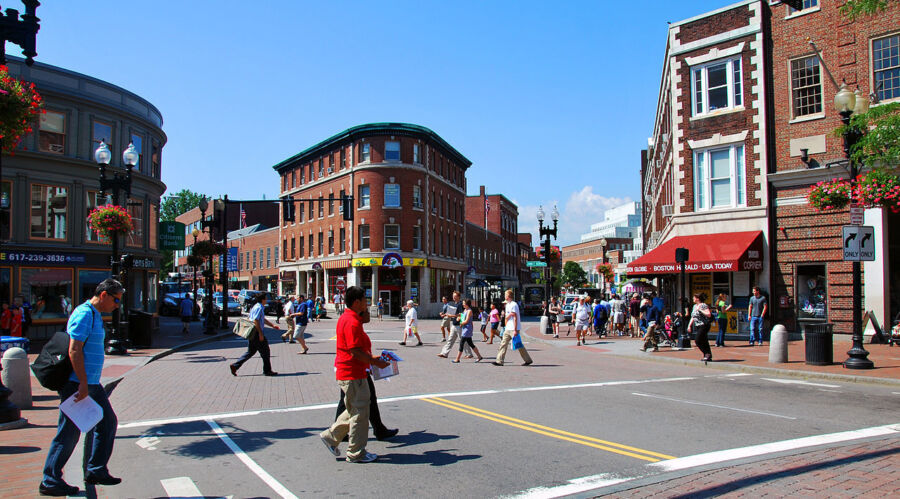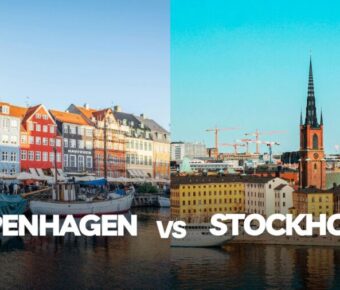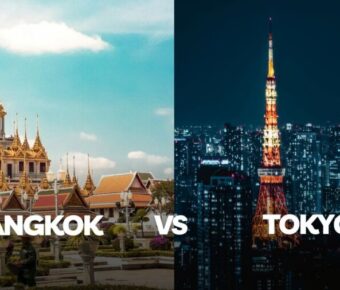
Toronto vs Boston: A Tale of Two Historic Cities That Will Surprise You in 2025
Toronto and Boston are two iconic North American cities, each offering unique experiences for visitors. These urban centers blend rich history with modern attractions, making them popular destinations for travelers seeking culture, food, and entertainment.
Most visitors spend 3-5 days exploring Boston, while Toronto typically requires 3-7 days to experience its wider range of attractions and activities. Both cities attract different types of travelers. Boston draws history buffs and families with its compact, walkable layout and educational sites, while Toronto appeals to those seeking big-city excitement and cultural diversity.
The cost gap between these destinations might surprise travelers. Boston’s living costs run about 35% higher than Toronto’s, which affects everything from hotel rates to dining prices. This makes Toronto an appealing choice for budget-conscious travelers who still want a world-class city experience.
Contents
- Comparison of Toronto and Boston
- Geographical and Cultural Overview
- Historical Significance and Heritage
- Cost of Living Analysis
- Housing Market Differences
- Everyday Expenses
- Utilities and Services
- Frequently Asked Questions
- What historical outcomes have shaped the rivalry between the Bruins and Maple Leafs?
- How do the defensive strategies of the Maple Leafs compare to those of the Bruins in recent matchups?
- What are some lesser-known factors that could influence the outcome of the next Toronto vs. Boston game?
- Can you highlight unique trends in the scoring patterns when the Maple Leafs face the Bruins?
- What unexpected player performances have made a significant impact in the Boston-Toronto games?
- How might recent team changes affect the dynamic of the upcoming Bruins vs. Maple Leafs game?
- More Travel Guides
Comparison of Toronto and Boston
Toronto and Boston stand as major cultural centers in North America, each with distinct characteristics shaped by their unique histories and geographical locations.
Geographical and Cultural Overview

Boston sits along the Atlantic coast as New England’s largest city. The city spans about 90 square miles with a mix of historic neighborhoods and modern districts. Its compact layout makes walking between popular spots easy and fun.
Toronto spreads across a much larger area on Lake Ontario‘s northwestern shore. As Canada’s biggest city, it covers roughly 240 square miles. The city features a mix of old buildings and sleek skyscrapers.
Both cities offer rich cultural experiences through their many museums and attractions. Toronto’s diverse population brings global influences to its food, arts, and festivals. Boston’s arts scene focuses more on traditional American and European styles.
Historical Significance and Heritage

Boston played a key role in America’s fight for independence. The Freedom Trail connects 16 historic sites that tell this story. Old brick buildings and narrow streets give the city a strong colonial feel.
Toronto’s past reflects its growth from a British colonial outpost to a modern metropolis. The Distillery District shows off Victorian industrial architecture. Many historic buildings now house trendy shops and restaurants.
Both cities protect their heritage buildings while adding new developments. Boston keeps its revolutionary-era charm in areas like Beacon Hill. Toronto mixes old and new in neighborhoods like the St. Lawrence Market area.
The cities maintain strong ties to their founding cultures. Boston emphasizes its Irish and Italian roots. Toronto celebrates its British heritage while embracing newer cultural influences from around the world.
Cost of Living Analysis
Living costs vary significantly between Toronto and Boston, with Boston being 35% more expensive due to higher housing prices and daily expenses. Salaries tend to be higher in Boston to offset these costs.
Housing Market Differences

Housing creates the biggest cost gap between these cities. Boston’s rental prices sit about 38% above Toronto’s rates. A typical one-bedroom apartment in Boston’s city center costs around $3,000 monthly, while Toronto averages $2,200.
Home purchase prices show similar differences. Boston’s median home price runs approximately 40% higher than Toronto’s, making homeownership more challenging for many residents.
Living space tends to be smaller in Boston for the same price point. Many people choose to live in surrounding areas like Cambridge or Somerville to find more affordable options.
Everyday Expenses

Food costs hit wallets harder in Boston. Grocery bills average about 19% more than Toronto, with basic items like bread, milk, and produce showing marked differences.
Restaurant meals cost roughly 21% more in Boston compared to Toronto. A casual lunch might cost $18-22 in Boston versus $14-17 in Toronto.
Transportation expenses vary less dramatically. Public transit passes cost similar amounts in both cities, though Boston’s system offers more extensive coverage. Gas prices tend to run slightly higher in Toronto.
Utilities and Services
Basic utilities for an average apartment in Boston cost about $150-200 monthly, including heating, electricity, and water. Toronto residents typically pay 10-15% less for these same services.
Internet and phone plans cost more in Boston. A basic internet package runs about $60-70 monthly, compared to $45-55 in Toronto.
Childcare costs hit Boston families particularly hard, averaging 41% more than Toronto. A typical daycare spot in Boston costs around $2,000 monthly, while Toronto parents pay closer to $1,200.
Frequently Asked Questions
The historic rivalry between Toronto and Boston extends beyond regular season games into memorable playoff matchups and strategic battles. Each team brings unique playing styles and strategies to their matchups.
What historical outcomes have shaped the rivalry between the Bruins and Maple Leafs?
The teams have faced each other in 16 playoff series since 1933. Their most famous clash came in 2013 when Boston completed a stunning Game 7 comeback, scoring three goals in the final 10 minutes.
The 2018 and 2019 first-round playoff matchups added fresh drama to the rivalry. Boston won both series in Game 7, cementing their reputation as Toronto’s playoff nemesis.
How do the defensive strategies of the Maple Leafs compare to those of the Bruins in recent matchups?
The Bruins favor a structured defensive system built around strong forechecking and physical play along the boards. They excel at limiting zone entries and forcing turnovers.
Toronto takes a more flexible approach, using speed and skill to break up plays. Their defensemen join the rush more often than Boston’s, creating odd-man advantages.
What are some lesser-known factors that could influence the outcome of the next Toronto vs. Boston game?
Face-off success rates in defensive zones have proven crucial in recent meetings. Both teams put extra emphasis on winning draws in their own end.
Special teams play tends to shift momentum dramatically in these matchups. The power play success rate gap between the teams narrows when they face each other.
Can you highlight unique trends in the scoring patterns when the Maple Leafs face the Bruins?
First-period scoring often determines the winner in Toronto-Boston games. The team that scores first has won 65% of their meetings in the past three seasons.
Goals come in bunches when these teams meet. Multi-goal periods happen 40% more often in their matchups compared to their games against other opponents.
What unexpected player performances have made a significant impact in the Boston-Toronto games?
Role players and third-line forwards frequently step up in these matchups. Several game-winning goals have come from unexpected sources on both teams.
Backup goalies have posted impressive numbers when called upon. They’ve recorded four shutouts in the last eight meetings between these teams.
How might recent team changes affect the dynamic of the upcoming Bruins vs. Maple Leafs game?
New line combinations on both sides create interesting matchup possibilities. The teams have adjusted their power play units to counter familiar penalty-killing strategies.
Both teams have integrated young players who bring fresh energy to the rivalry. These newcomers often play key roles in special teams situations.



